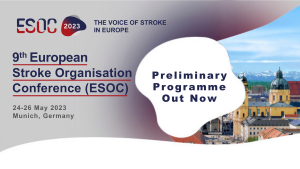
Author: Dr Enache Iulia-Ioana, MD
National Institute of Neurology and Neurovascular Diseases, Bucharest, Romania
Neck pain and headache are part of the common clinical picture of cervical arterial dissections. In general, vertebral artery dissections more frequently present with neck pain, as opposed to internal carotid artery dissections, in which headaches are slightly more common.1 Accompanying neurological deficits may develop after a delay that can range from hours to days, or even weeks.2–4 The Horner syndrome together with pain is almost pathognomonic of carotid artery dissection.4
Even though isolated cephalalgia as the sole presentation of cervical artery dissection has been reported, patients might not be recognized when they don’t have neurological deficits. In a case series of 20 patients with a cervical arterial dissection presenting only with neck pain or headache, patients often had a history of hypercholesterolemia, smoking, or migraine with or without aura.5 More often than not, pain was reported as severe and patients required analgesics.4,6
With regard to the carotid artery, the patient may report a headache that is ipsilateral to the dissection, non-pulsatile, severe, and with a sudden onset.2–4 Occasionally, the headache may have migraine-like characteristics, but its occurrence in patients over the age of 30, with recent history of minor trauma and with no family history of migraine should alarm the clinician.7 Cervical artery dissection may also present with symptoms similar to a ‘status migrainosus.’8 Migraineurs will usually describe the pain as notably distinct from other episodes, however there are exceptions.5 Besides, cluster-like presentations have also been described.4
In vertebral artery dissection, cephalalgia is often occipital and unilateral (also ipsilateral to the causative injury), although diffuse and frontal pain have also been described. In terms of quality of the pain, there is a high variability, from sharp to constrictive or diffuse pain.3,5 Some cases may have thunderclap characteristics that require a differential diagnosis with a subarachnoid hemorrhage.2 A pressing quality and posterior localization may cause the pain to be mistaken for tension-type headache.6 A characteristic that can prove to be a hint indicating vertebral artery dissection is the headache’s variation with movements of the neck (both exacerbation and relief may occur on flexion or extension).9 Migraine characteristics are more rare in vertebral artery dissection, although they have been described, with visual aura mimics (scintillating scotomas) being attributed to emboli in the occipital lobe.10
In conclusion, cervical artery dissections should be considered in the differential diagnosis of neck pain and headache in the emergency department. Given the delay that may occur in between the development of other characteristic neurological findings, an open mind can mean time bought in terms of adequate treatment for patients presenting with cephalalgia as the only symptom.
References:
- Debette S, Grond-Ginsbach C, Bodenant M, et al. Cervical Artery Dissection Ischemic Stroke Patients (CADISP) Group. Differential features of carotid and vertebral artery dissections: the CADISP study. Neurology, 2011;Sep 20;77(12):1174-81.
- Mokri, B Headaches in cervical artery dissections. Current Pain and Headache Reports, 2002;6(3), 209–216.
- Silbert PL, Mokri B, Schievink WI. Headache and neck pain in spontaneous internal carotid and vertebral artery dissections. Neurology, 1995 Aug;45(8):1517-22.
- Biousse V, D’Anglejan-Chatillon J, Massiou H, et al. Head pain in non-traumatic carotid artery dissection: a series of 65 patients. Cephalalgia, 1994 Feb;14(1):33-6.
- Arnold M, Cumurciuc R, Stapf C, et al. Pain as the only symptom of cervical artery dissection. J Neurol Neurosurg Psychiatry. 2006;77(9):1021.
- Matsumoto H, Hanayama H, Sakurai Y, et al. Investigation of the characteristics of headache due to unruptured intracranial vertebral artery dissection. Cephalalgia. 2019;39(4):504-514.
- Mirza Z, Hayward P, Hulbert D. Spontaneous carotid artery dissection presenting as migraine-a diagnosis not to be missed. Emerg Med. 1998;15:187-199.
- Sainz AR, Calle IA, Ontanon JM, et al. Bilateral Carotid Dissection Presenting as Status Migrainosus: All That Glitters Is Not Gold. J Med Cases. 2014;5(9):502-504.
- Kim JG, Choi JY, Kim SU, et al. Headache characteristics of uncomplicated intracranial vertebral artery dissection and validation of ICHD-3 beta diagnostic criteria for headache attributed to intracranial artery dissection. Cephalalgia. 2015;35(6):516-526.
- Morelli N, Mancuso M, Gori S, et al. Vertebral artery dissection onset mimics migraine with aura in a graphic designer. Headache. 2008 Apr;48(4):621-4.
ESOC is Europe’s leading forum for advances in research and clinical care of patients with cerebrovascular diseases. ESOC 2023 will live up to its expectation, and present to you a packed, high quality scientific programme including major clinical trials, state-of-the-art seminars, educational workshops, scientific communications of the latest research, and debates about current controversies. ESOC 2023 programme is now available, and registration and abstract submission are now open. Learn more here.



